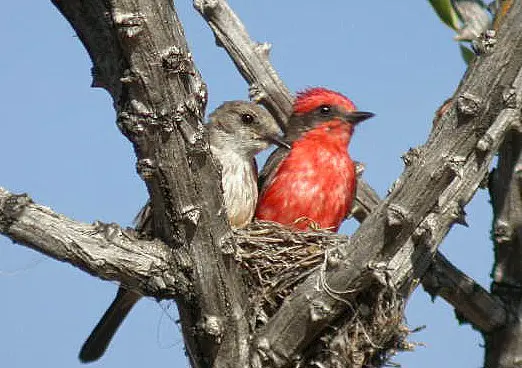Arctic Tern
The Arctic Tern is a sea bird belonging to the tern family of Sternidae. It is a very migratory bird, which has a circumpolar breeding distribution covering the Arctic and sub-Arctic regions of the northern hemisphere, such as Europe, Asia, and North America (as far south as the state of Massachusetts). This bird sees 2 summers a year, as it migrates from its breeding grounds in the northern hemisphere, right down to Antarctica and back. It makes a round trip of a whopping 44,300 miles (70,900 km) per year, and is the longest regular migration route known of any animal.
As a result of its long migration route that it undertakes yearly, it flies and glides very well through the air, and actually performs almost all its tasks whilst in the air. It only nests every 1 to 3 years, depending on its mating cycle, and once it has finished its nesting business, it will take to the sky again for its southern migration.
The Arctic Tern is a medium-sized bird, which is about 33 to 36 cm from the tip of its beak to the tip of its tail. It has an average wingspan of about 76 to 85 cm, and weighs about 86 to 127 grams. As an adult, its plumage is grey with a black crown and nape, as well as white cheeks. Its upperwings are pale grey, and its wingtips are almost transluscent. Its tail is white, and its underparts are a light grey. Juveniles have black bills and legs, scaly looking wings, and dark feathers. They also have a white forecrown.
The Arctic Tern’s diet varies depending on where it is and what time it is, but it is mostly a carnivorous animal. It usually eats marine crustaceans or small fish. Fish are the most important part of its diet, as it accounts for most of the biomass eaten than any other food. It will prey on immature shoaling fish species such as cod, herring, capelin, and sandlances. The types of marine crustaceans it eats include krill and crabs. Arctic Terns’ also eat marine worms, berries, molluscs, and insects.
Sadly, the Arctic Terns have been categorised as a threatened species, or a species of concern in certain parts of the world. They are also part of the species protected by the Agreement on the Conservation of African-Eurasian Migratory Waterbirds. In the northern hemisphere, numbers have declined in New England during the late 19th century as it was popular for hunting for the millinery trade. In western Greenland, the Arctic Tern is still exploited even though this bird has declined greatly around this area since the 1950’s. In the southern part of their range, its population has been declining due to food shortages. However, Birdlife International considers this species to be only at lower risk since 1988, as they believe there are about 1 million individual Arctic Terns living around the world.




